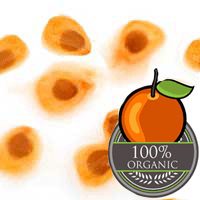
Seeds to plant vegetables don’t magically pop out of vegetable plants. While in the old days farmers saved seeds from vegetables to plant next year’s crop, today’s commercial seed production is vastly different. Growers plant, grow and harvest an entire crop for the sole purpose of producing seeds. The growing season is twice as long, because seeds can’t be harvested until the vegetable crop is mature.

The seed harvest
Wet-seeded crops like tomatoes and peppers are harvested when the fruit is at full color. The pulp is fermented and drained, the seeds are removed, then washed and dried. Dry-seeded plants like onions and broccoli are cut at maturity and allowed to field dry while the seeds develop. At this point, seeds may be removed by hand or machine.
Vegetable seeds are either hybrid or heirloom. Hybrids, the offspring of two parent plants that differ from one another in at least one trait, are cultivated for higher yields, uniform maturity, and pest resistance. Most vegetables sold in grocery stores today are the result of hybrids. But every subsequent planting of hybrid seeds collected from crops results in degeneration; thus, most farmers do not save and replant them.
Heirloom seeds are from open-pollinated plants that are fertilized by pollen carried by wind or insects from the same plants in the field. Throughout history, these seeds have been saved from a crop and replanted the next year.
Germinating alternatives
The interest in organic produce has resulted in increased demand for organic seeds, which must meet U.S. Department of Agriculture’s National Organic Program standards that prohibit the use of most chemical herbicides, insecticides, fungicides and fertilizers. The Restoring our Seed program is building a network of farmers, seed companies and markets that promote organic, regional and heirloom seed-saving programs.
Farmers can take a few steps back in time to follow traditional seed practices by growing regional, heirloom seeds that are suited to environmental conditions, without dependence on synthetic pesticides and fertilizers. By allowing plants to complete their full flowering cycle in order to capture their seeds, a natural habitat for insects, pollinators and pest predators is created. The unused mature plant materials are returned to the soil to provide needed nutrients. Sometimes a return to tradition can germinate new inspiration.
– Environmental Nutrition
Reprinted with permission from Environmental Nutrition, a monthly publication of Belvoir Media Group, LLC. 800-829-5384. www.EnvironmentalNutrition.com.
(c) 2012 BELVOIR MEDIA GROUP DISTRIBUTED BY TRIBUNE MEDIA SERVICES, INC.

